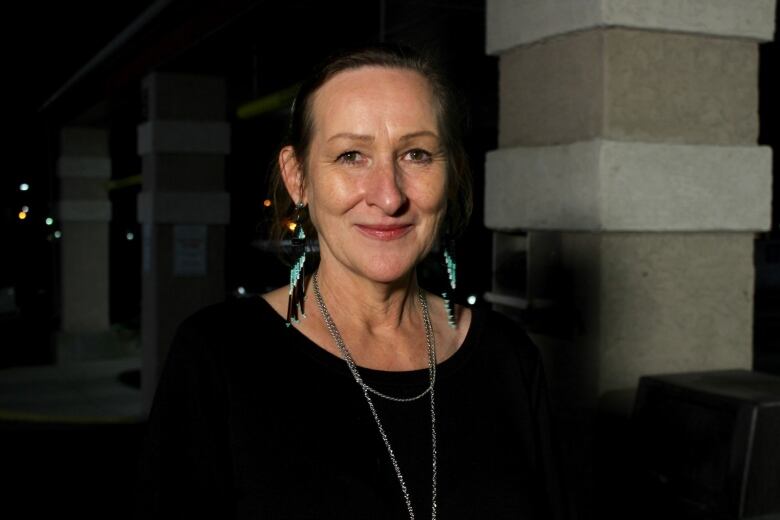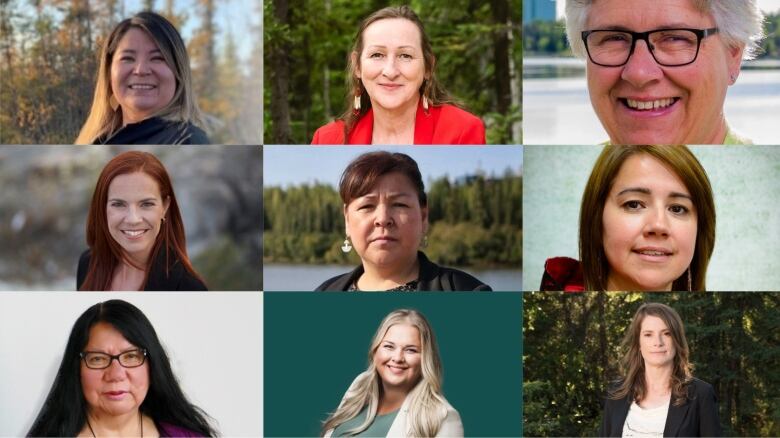Only 4 of 11 incumbents survive in historic N.W.T. election
Many new faces, including record number of women, may actually bring new approach to government

When all the votes were tallied, only four of 11 incumbents survived in the N.W.T. election Tuesday. With three acclamations, that means just seven MLAs from the last government are returning to the 19th Legislative Assembly.
The cabinet was also all but cleaned out, with Caroline Cochrane the sole minister still around.
In the biggest shocker of the evening, Wally Schumann the incumbent industry minister touted as a possible contender for premierlost to Rocky Simpson in Hay River South. (Simpson now joins his son R.J. in the legislature.)Former minister Louis Sebert lost in Thebacha.
Premier Bob McLeod decided in the final hour not to seek re-election. Threeof his most senior cabinet ministers, Robert C. McLeod, Alfred Moses,and Glen Abernethy, also chose not to run.
There were also some very close races, including three in Yellowknife which should trigger recounts. In what some dubbed a referendum on the economy, the last government's quasi-environment critic Kevin O'Reilly squeaked out a win over one-time industry minister Dave Ramsay in Frame Lake by 11 votes.

It might be tempting to view this race as indicative of a larger trend in the Northwest Territories, but with consensus government (unique to the N.W.T. and Nunavut) each candidate runs as an independent. In truth, we won't really know which way this government will lean and what approach it will take until all 19 MLAs get together to hash out their priorities and choose a premier.
Change, but for real this time?
When several longtime MLAs were ousted in the 2015 election, it was clear voters wanted a change. So it was ironic when, less than a month later, MLAs voted to give Bob McLeod another term as government leader. (Another peculiarity of consensus government: MLAs elect the premier.)
This time around, things will change.
This government faces a daunting list of challenges, ranging from overhauls to the territory's education and child and family services systems, down to sensitive decisions that potentially pit N.W.T. regions against each other, such as the location for a proposed polytechnical university.
Reflecting on the 18th assembly, Cochrane thinks they need to settle on a more realistic number of goals when they hammer out priorities.
"The biggest thing for me is not having so many priorities. Over 200 priorities was ridiculous, so I'm hoping that will stay under a dozen and then we'll actually be able to get a lot more work done."

Who could be premier?
Although there is no formal rule about rotating the premiership between regions, three of the last four premier terms belonged to Yellowknife MLAs.
It will be interesting to see if there's pressure to go outside the capital. When consensus government works as intended, it's a system of compromise, where every region's interests are considered to develop policy in the best interests of all residents.
"Consensus government means strong communities and strong regions," said newly-elected Frieda Martselos.
Jackson Lafferty, a former education minister representing Monfwi, has publicly stated his intent to run for premier. So has returning Hay River North MLA R.J. Simpson. Cochrane has also hinted about it. But she will pursue a minister position, noting there's only ever been one woman on cabinet at a given time.
"I would be putting my name forward and I'm hoping that one of the women that gets elected will be sitting beside me in cabinet."

Record number of women
The Northwest Territories never had more than three women in government. All that changed on Tuesday, when nine women were elected.
-
Incumbent education minister Caroline Cochrane was re-elected in Range Lake
-
Nurse Lesa Semmler won in a landslide in Inuvik Twin Lakes
-
Lawyer Caroline Wawzonek beat out Gaeleen MacPherson by a large margin in Yellowknife South
-
Engineer Katrina Nokelby won Yellowknife's Great Slave seat
-
Julie Green was re-elected in Yellowknife North over Arlene Hache
-
Photographer and government worker Caitlin Cleveland overcame a field of six candidates in Yellowknife's Kam Lake
-
Self-government negotiator Diane Thom won in Inuvik Boot Lake
-
Frieda Martselos, former Salt River First Nation chief, took Thebacha from an incumbent minister
-
Norman Wells's Pauline Chinna won in the Sahtu.
In one night, the Northwest Territories went from worst to first the smallest to largest proportion of women legislators in the country.
Jane Groenewegen, who served five terms and was usually one of only two women in the 19-member assembly, called it a historic night.
"This is going to change the way our legislature looks and perhaps the way it actually works."












_(720p).jpg)


 OFFICIAL HD MUSIC VIDEO.jpg)
.jpg)



























































































